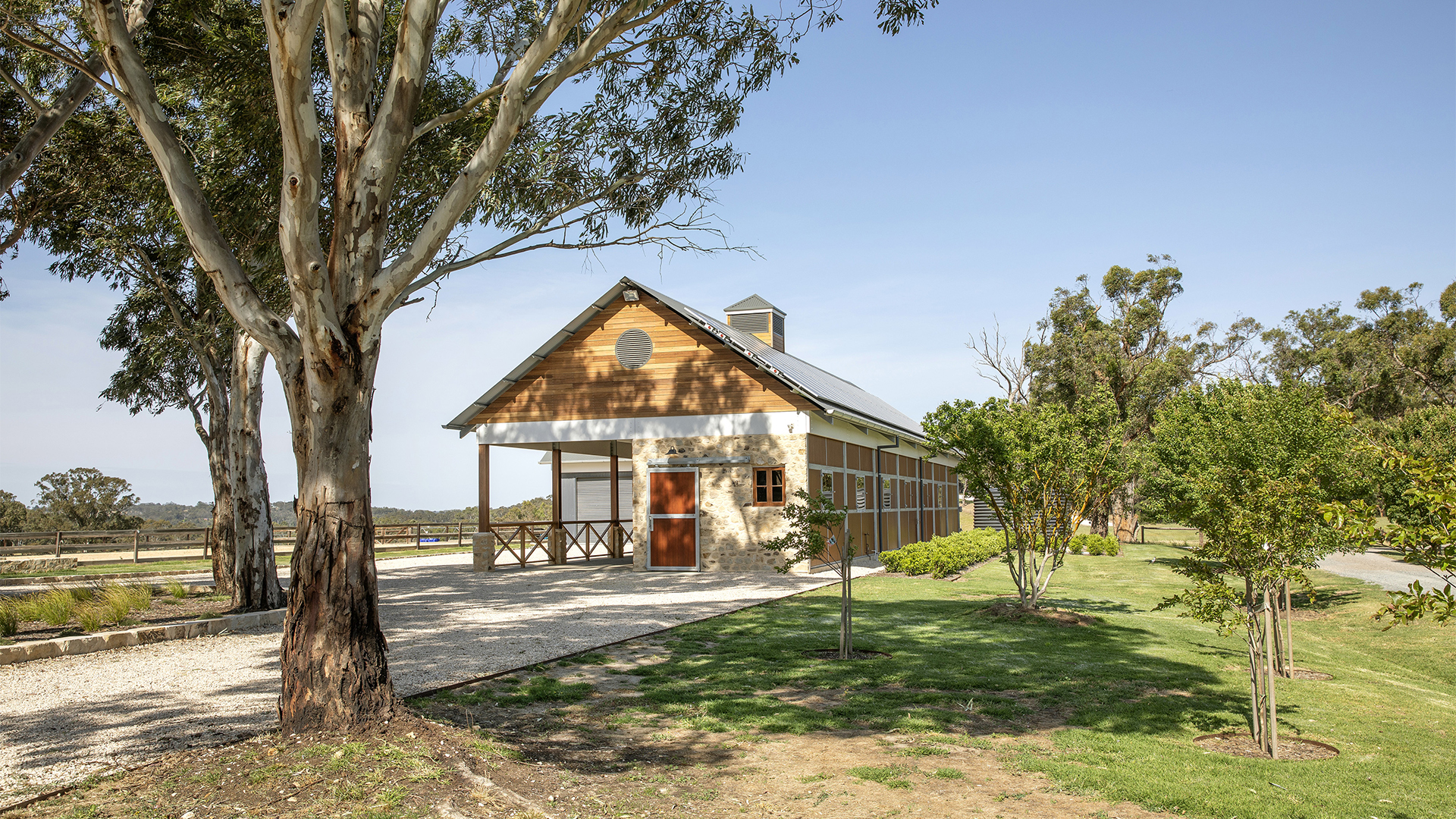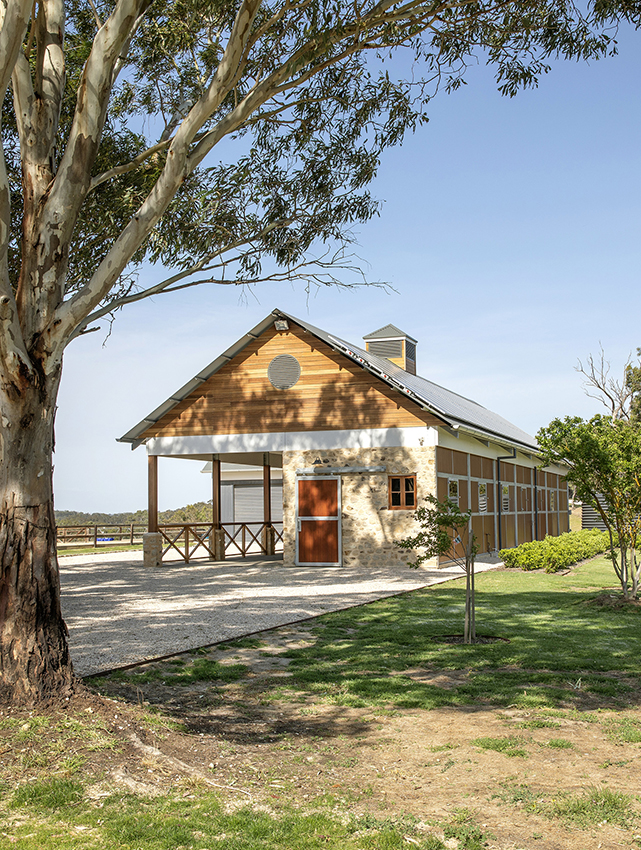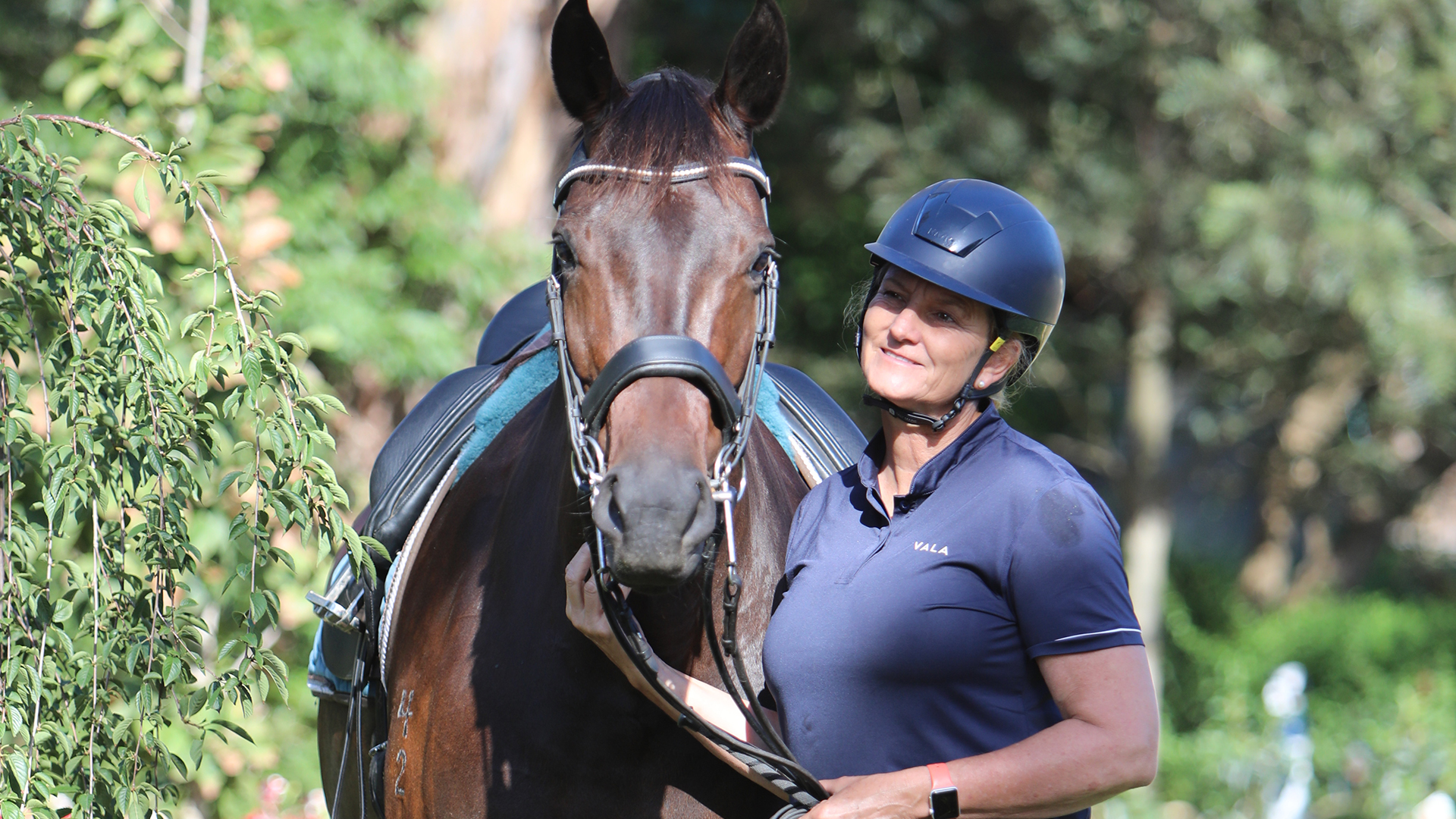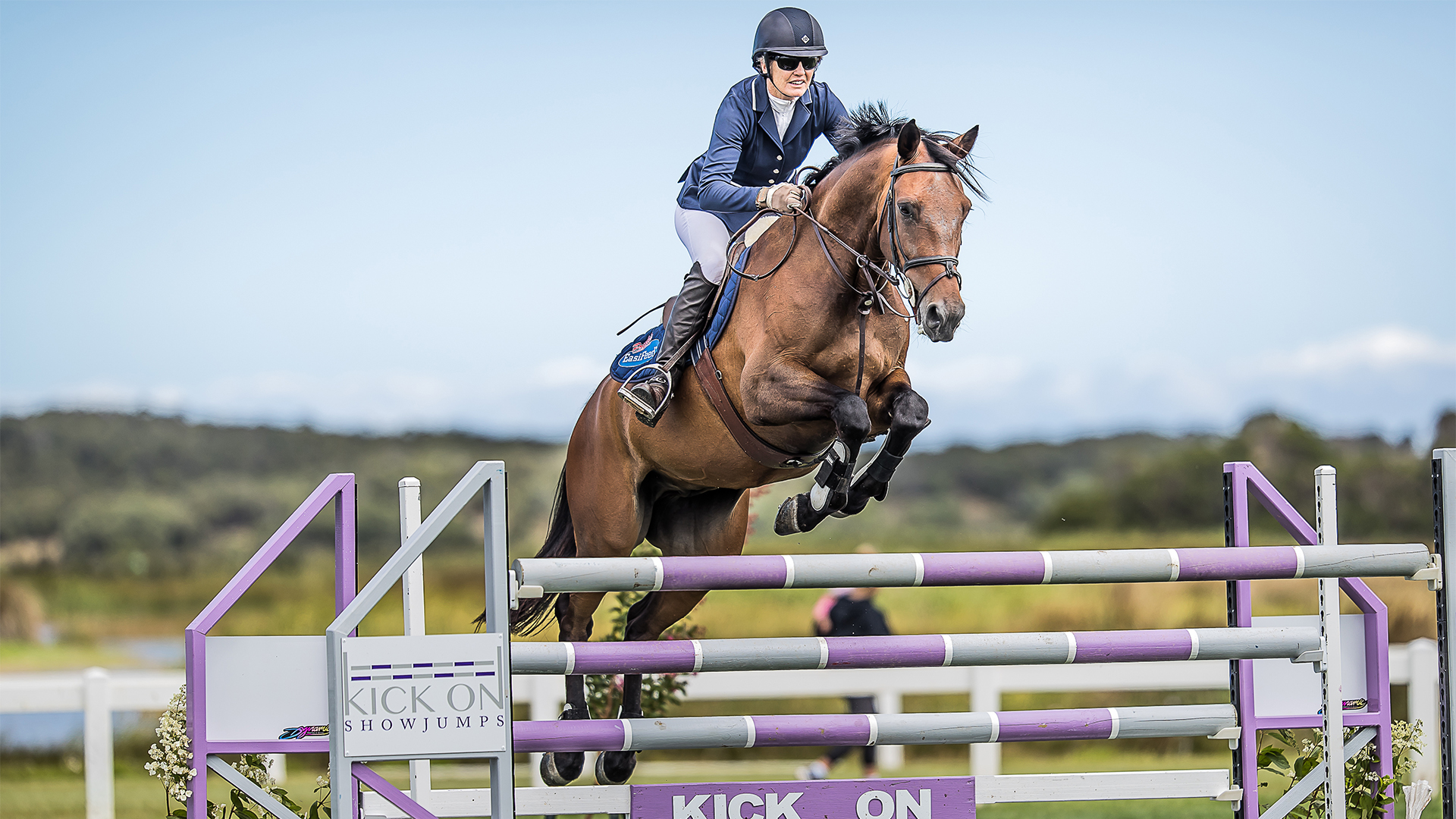Keen eventing competitor Luke Jones never planned to be an equine architect, until a call from the McNaught family inadvertently changed his career trajectory. Twenty years on, he’s worked on countless equestrian properties around Australia and abroad – and when it comes to eventing, he feels he’s riding well enough to continue enjoying the sport.
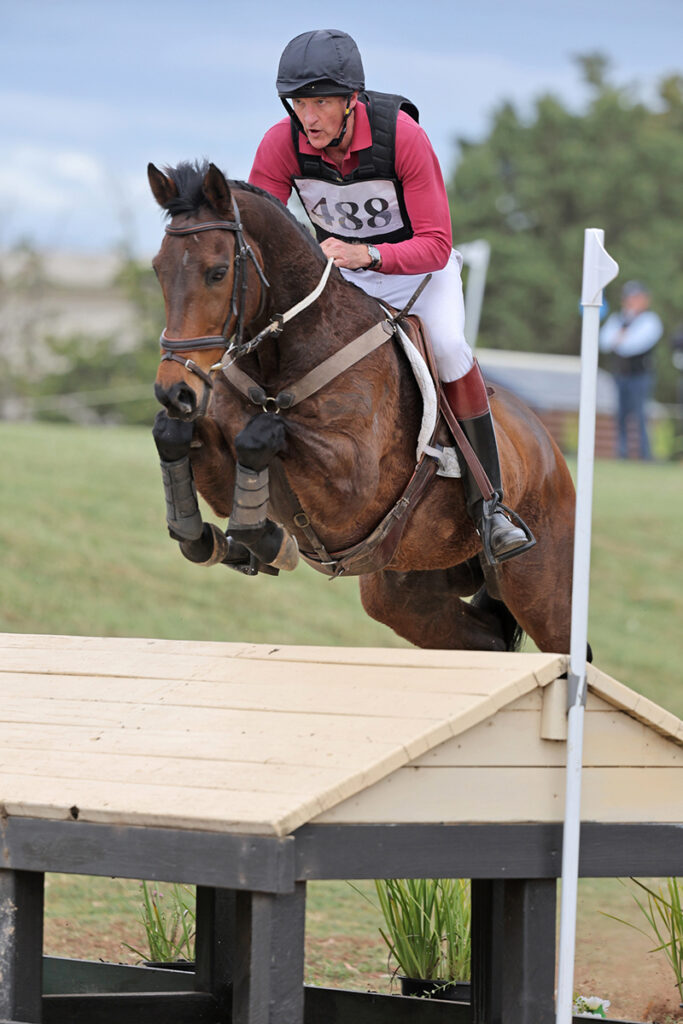
Architect Luke Jones riding his off the track Thoroughbred Spirit in the EV Spring Horse Trials CCI4*S at Werribee last year. Image by Derek O’Leary Photography.
South Australian architect Luke Jones is currently in the middle of designing a wedding venue for a property nestled in the Sunshine Coast hinterland. It’s a job that came about after originally designing the property’s stables and represents a familiar scenario for Luke: end-to-end property design, with horses a common thread.
Ever since picking up the reins at the age of 12, horses have always featured prominently in Luke’s personal life. “I went to Pony Club, where I began competing and really enjoyed it. I more or less never stopped competing since,” he explains of how riding became his sport of choice. An avid eventer, Luke currently has two horses of his own and loves nothing more than the thrill of cross country.
“I went to Pony Club,
where I began competing
and really enjoyed it….”
On the professional front, Luke studied architecture at university. “I never actively considered joining my sport and my profession; they were just two separate things. I graduated from university and worked for a few different architects and was just competing and enjoying the sport… and then the opportunity to merge the two presented itself, thanks to the McNaught family.”
WHERE IT ALL STARTED
In 2003, the McNaught family began acquiring and developing the land that would become Boneo Park. “I was approached by Rob McNaught, who said, ‘I’ve heard you’re an architect and I’ve heard you ride horses. I wonder if you’d be interested in working with us?’” explains Luke of how his first equestrian architecture project came about.
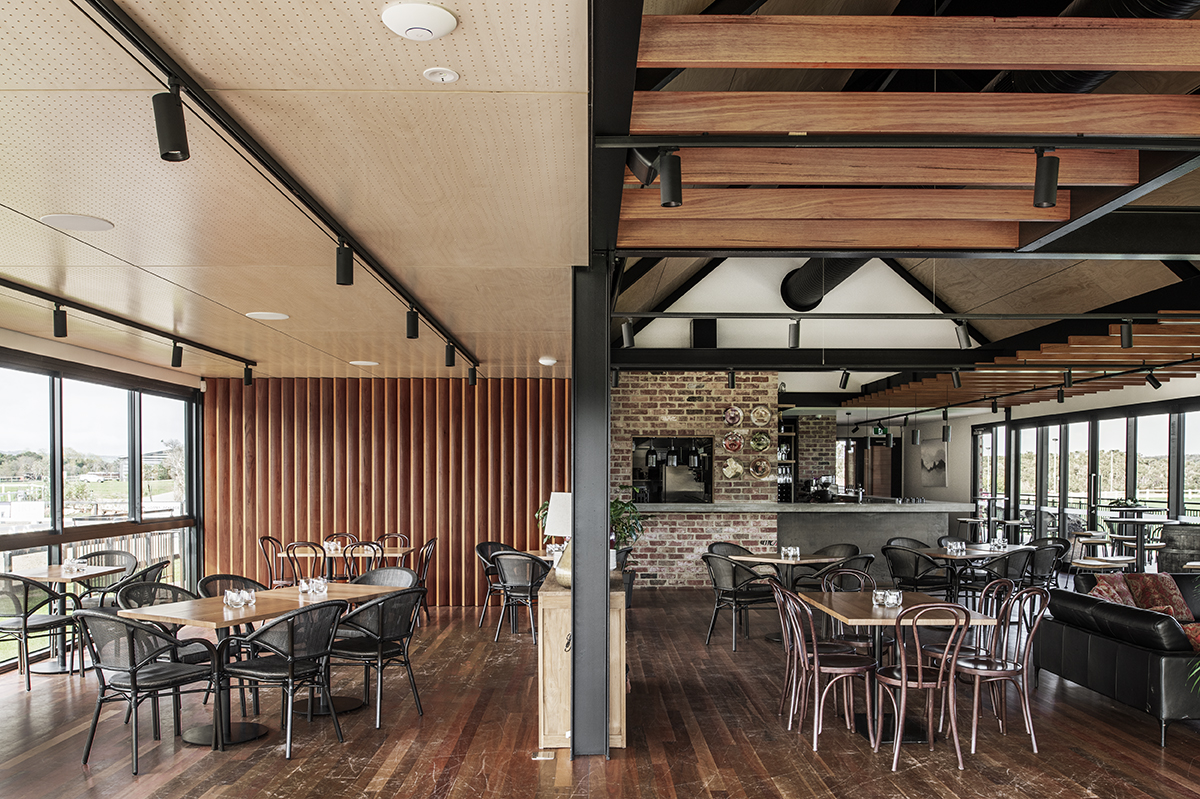
Having just finished up working at an architecture firm at the time, the opportunity to work on an equestrian property was a dream come true. Luke was involved in the development of Boneo Park from the beginning, contributing to the property’s master plan and ultimately designing all the buildings – from the house to the indoor arena and stables, and finally the building that would come to house Arilla Restaurant.
“The location of that building between the two arenas was relevant in terms of providing a place to watch sport and enjoy a meal… it was the last major element of Boneo Park that I was involved with as an architect, and it was bloody great!” enthuses Luke.
“I’d been working for the McNaught family for 15 years by the time Boneo Park was finished, and it was just a really positive relationship. Doing that restaurant building as a culmination of all that work was very rewarding. The McNaught family, as they had been through the whole journey, were just fantastic and backed themselves to do it and I’m really proud of the result.”
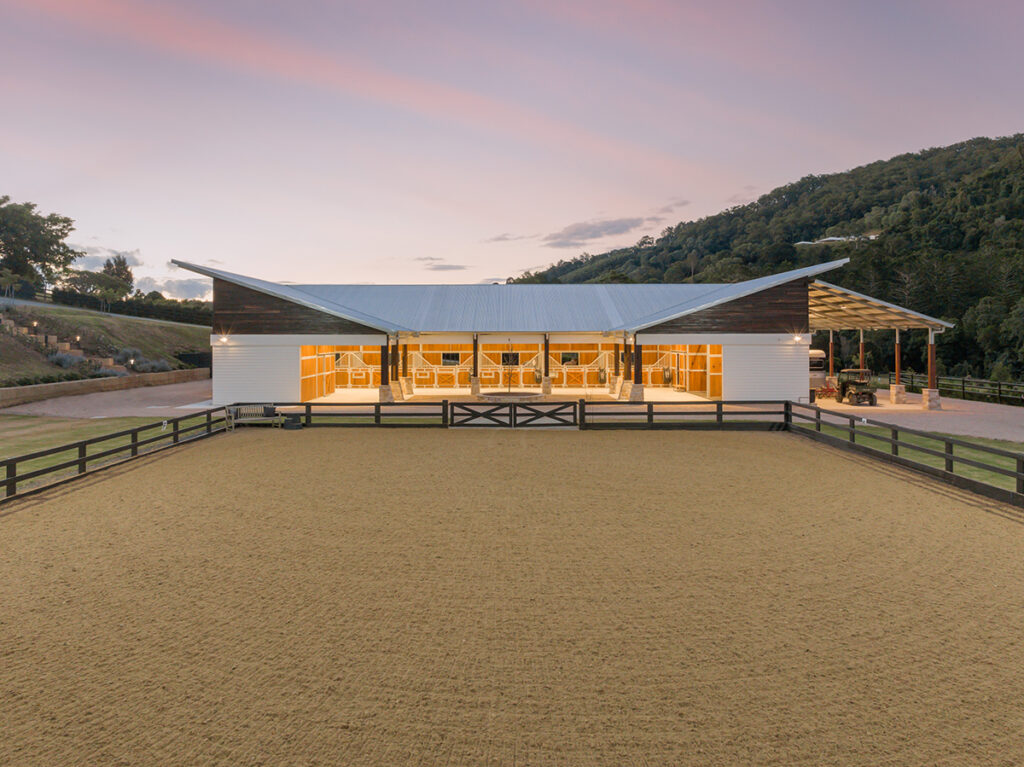
Closeburn Stables, Queensland, designed by Luke Jones Architects. Image by Anki & Co.
Like the entire equestrian community in Victoria and around Australia, Luke was thrilled to see that when Boneo Park recently changed hands, it was purchased with the intention of continuing its use as a state-of-the-art equestrian agistment and competition facility.
“As with any project that I do, I’m just one of the cogs in the wheel, of course. It’s so obvious the efforts that the McNaught family put into the whole thing. In terms of my particular role that I have in these sorts of projects, it is really enjoyable to see them progress.
“The way the McNaught family managed it, Boneo Park has been such a difference maker to the sport in Victoria. For it to have now remained with horse people is fabulous.”
Luke acknowledges that it’s easy to say his equestrian background helps with his work designing for equestrian purposes – however, he has never taken it as a given that just because he rides a horse and is an architect, he will be good at designing equestrian centres.
“I don’t think that it’s a given. When Rob said he wanted to employ me, I had just left my previous employment and the timing was great… so I took myself overseas and had a little holiday, but I also went on a study trip to some European equestrian centres to see what the go was and what was working and wasn’t working. It’s important, whatever the profession, to constantly be curious and constantly look to improve.”
FROM QUEENSLAND TO INDONESIA
From that initial equestrian project, Luke has continued designing multiple equestrian properties over the years alongside regular residential work.
While he’s had friends question just how much work an “equestrian architect” could possibly have, Luke says his phone rings all the time. “Having 10 to 20 equestrian projects on the go at any one time is normal alongside the residential and other commercial work,” he explains, adding that these days he’s running his business under his own name – Luke Jones Architects – and has another fantastic architect and student architect working for him.
Projects range from private properties to state government projects and international facilities.
“I recently completed a private dressage stable north of Brisbane. This was a relatively small private stable for a rider, but carefully focused on addressing the local climate and also functionality in terms of how the building related to the arena, the paddocks and the house. This design really took in the bigger picture of the property.”
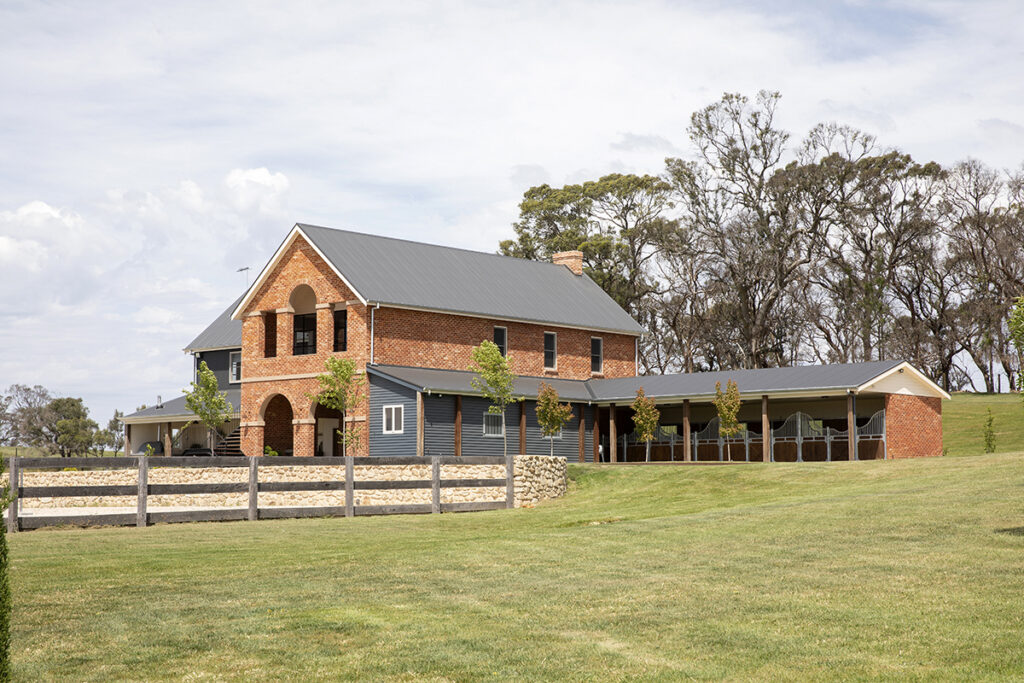
Murdoch Hill Stables, South Australia, designed by Luke Jones Architects. Image by Peter Hoare Photography.
In Camden, an acreage subdivision with 25 blocks of land – dubbed The Stables of Camden – required a communal equestrian facility. “This was the last stage of a large, high-quality subdivision where all blocks of land sold incredibly quickly. The development took out Best Residential Subdivision at the Urban Development Institute of Australia awards for 2023; seeing this sort of success for those who employ me is really rewarding.”
Another recent project was the new South Australian Police Mounted Branch facility – in total, a $90 million state government project. “It was a complicated project that presented all manner of difficulties, many of which I’d never dealt with before, but it was just amazing. It was brilliant to be involved with, and I think the mounted police here in SA now have a great new home!” says Luke.
On the cards in Victoria is a community project at the Woady Yaloak Equestrian Centre southwest of Ballarat, which is owned by the local council. “I’ve completed a master plan and the council is hoping to secure funding to improve that facility. It’s just a really worthwhile community-run facility that I was able to contribute to in my role as an architect, and hopefully the work I did gives them a pitch to the likely sources of funding so they can go ahead with development. It’s a really positive project.”
Projects such as Woady Yaloak Equestrian Centre remind Luke just what equestrian sport has to offer the local community. “There’s a lot equestrian sports can offer to a community. The regional nature of the sport for a start is a really positive thing. Then there’s the equality of not just all genders competing against one another, but equality in terms of age and skill level. There’s no other sport where an Olympic medallist is also going to compete against a 12-year-old kid who’s just starting out… because the horses must be trained. If you’re into football you might join a team for a Saturday game, but you’re never going come up against a Brownlow Medallist in competition at the peak of their career!”
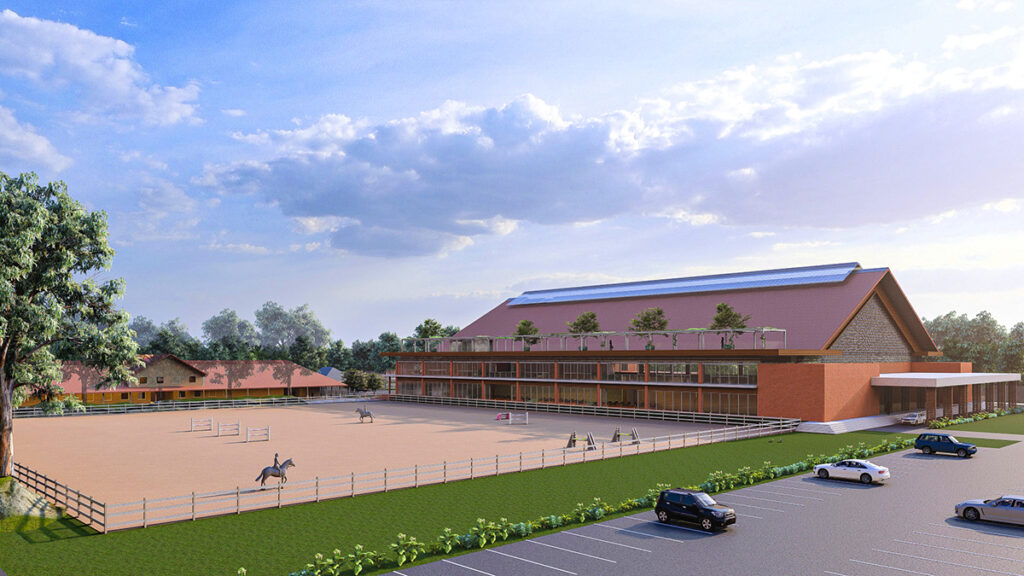
A rendered image of Nusantara Equestrian Centre, Indonesia, designed by Luke Jones Architects. Image supplied.
Luke’s horse-related architecture also extends beyond the equestrian world to producing property masterplans for the racing industry. “I’ve done some racecourse master planning and quite a few Thoroughbred barns, including pre-training and training facilities,” he explains.
Equestrian architecture has also taken Luke overseas. Last year, he was engaged as the design architect for Nusantara Equestrian Centre outside of Surabaya, a city in the Indonesian province of East Java.
“It’s going to be a public equestrian centre with an indoor arena that includes grandstand seating, places to eat, retail spaces and VIP boxes. It has been an exciting project to be involved with; it’s currently half built and it’s exciting to see that one progress.
“It has been designed to give Indonesian riders in the area the opportunity to train, mostly in the Olympic disciplines, and be as good as they can be. It will provide the opportunity for good quality competition and coaching, and for the horses to live in a really good quality facility in a good environment.”
LOVE OF THE CHALLENGE
“As design architect, managing different localities and cultures, I love it. I like the challenge of the specifics that a locality provides; dealing with the specifics of climate and culture keep me engaged. It’s the nature of my work because I live in Adelaide, yet my work is Australia-wide – and as in the case of Nusantara Equestrian Centre, occasionally overseas.”
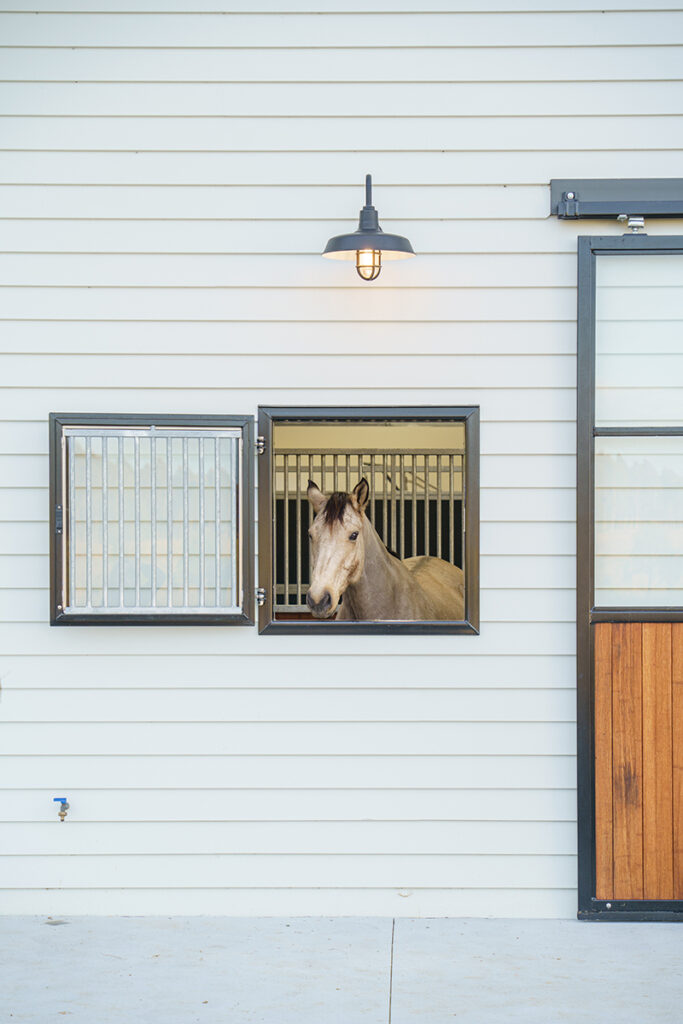
Quorrobolong Stables, New South Wales, designed by Luke Jones Architects. Image by Show Pony Creative.
“It’s important to design for
the horse just has much as
for the land and climate.”
Luke always travels to each property as early on in the project as possible, as he believes it’s essential as an architect to see the location first-hand. The other important factor to consider is the horses – and Luke says that it’s important to design for them just has much as for the land and climate.
“Horses are animals that are very close to their natural instincts; they’re going to be happiest in a paddock with green grass, and that’s about it. We love riding them and they’re fabulous animals to be around and for humans to be with, but at the same time, we need to always accommodate their instincts when designing equestrian properties.
“They’re flight animals and they need as close to a natural environment as they can get in the built environment that I’m designing for them. The two key things that that come out of that are natural daylight and natural ventilation, to keep them healthy and happy. Also, the fact that they’re social animals… I think managing the horses’ health and social needs in a built environment – whether it’s a paddock shelter or a full-blown stable building – are some of the key aspects that must be attended to.”
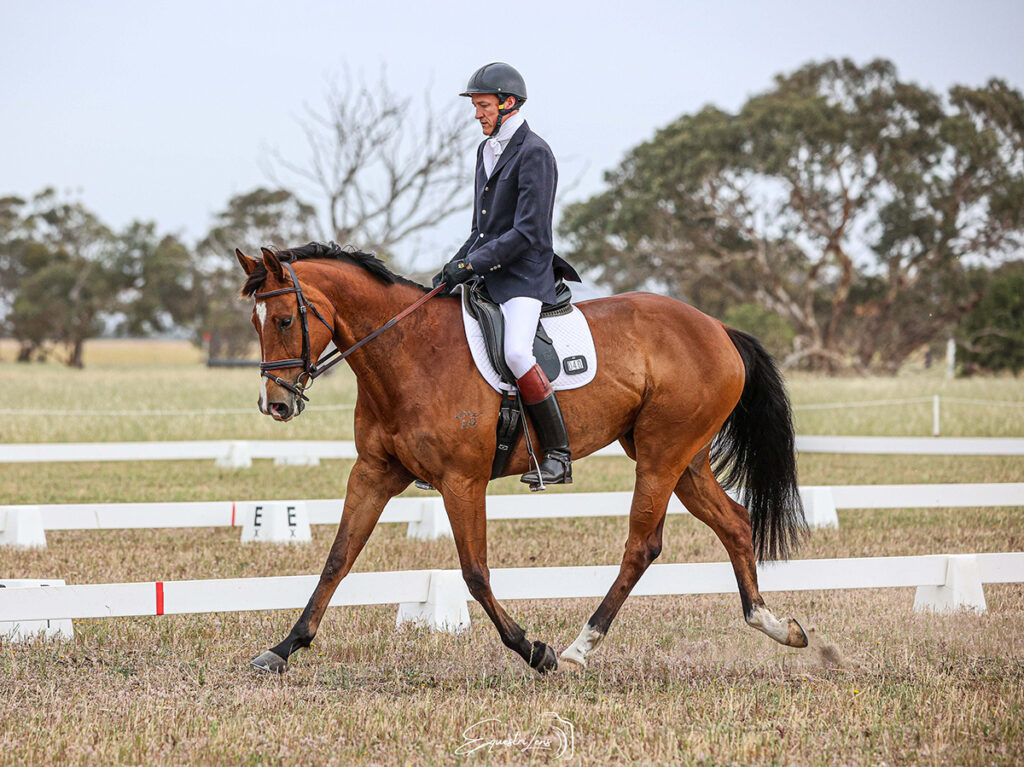
Luke riding his young horse, Luck Money, at Milang Horse Trials last year. Image by EquestriLens.
SPIRIT & LUCK MONEY
“My routine is to ride my horses in the morning on my way to work. I get to work about mid-morning, and then work in the evenings as that’s a productive time for me,” says Luke of how he fits in working two horses with running his business. “I’m lucky enough to have the flexibility. I’m also lucky enough to have a mother who has always enjoyed horses; she was part of the reason why my brother and I started riding in the first place. She continues to contribute to my horse-riding activities!”
Luke’s long-time equine partner is Spirit, a 15-year-old off-the-track Thoroughbred whom he’s taken to four-star level and enjoyed success with along the way – including an FEI win in the CCI3*S at the 2023 Equestrian Victoria Spring International Horse Trials and a top 10 finish in the CCI3*L at Adelaide Equestrian Festival this year. While this year hasn’t exactly gone to plan, Luke is hopeful Spirit can successfully progress at four-star and tackle the level at both Adelaide and Melbourne International Three-Day Event this year.
“That’s my goal at the moment, but let’s see what happens. He’s a good horse and he tries his hardest for me… so I don’t get too stressed about results. I’ve spent most of my time trying to train his cross country, as that’s what entertains me… so I’ll just keep doing my best!”
Luke also has a young Dutch Warmblood called Luck Money, by Baltic VDL out of an Australian Thoroughbred mare. “I bought her a year ago from fellow South Australian Sarah Clark who has been based in Ireland and ridden around Burghley Horse Trials for the last two years.
“Sarah has a particularly good eye for a horse, and she had bought this mare as a youngster from a stud in Queensland. It’s tough and expensive competing overseas, so she sold a couple of her young horses, and this is one of them. So I have slightly taken advantage of Sarah’s good eye and knowledge of breeding, because it’s not something I know much about!
“Luck Money had probably only been under saddle a couple of months when I bought her, so she was very, very green. She’s now six and I’ve done half a dozen events this year; she’s currently at EvA 95 level. I’m looking forward to competing her more next year. I reckon she’s good.”
At age 50, Luke believes he’s riding as well as he ever has – however, he’s quick to laugh and point out that despite that, horses are a great leveller and he did come off last start with Luck Money.
“She should be ready to go one-star early next year, assuming I don’t fall off again,” he laughs, adding, “I’m ambitious with her, I want her to keep going up levels, but at the same time it’s just a fun process and I enjoy it.”
For Luke, the joy of competing his two horses and combining this passion with his professional career has been a dream come true.
“I wouldn’t have necessarily predicted this is where my career would end up; I had no grand plan to be an equestrian architect. It’s just gone that way, and I think it’s great. I love it and I just count my lucky stars.”
This article was written in conjunction with Luke Jones Architects. To find out more, visit the website or discover more equine projects via Instagram and Facebook. EQ
